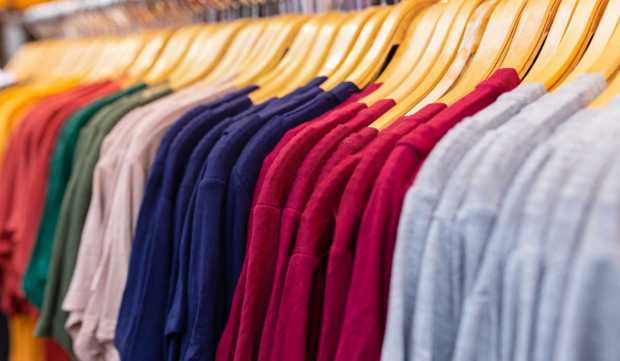Are Apparel Resellers ‘Uniquely Positioned’ or Fighting an Uphill Battle?

With inflation and economic uncertainty currently causing an instinctive recoil by many consumers when it comes to splurging on non-essentials, a week’s worth of insight and commentary from several of the nation’s top apparel resellers has sparked a bit of a debate and a rethink.
Is this niche category in trouble, as stock price declines this year of over 60% might suggest, or are these alternative outfitters poised to benefit from the present rise in belt-tightening consumers?
The answer, if using comments and results from Q2 earnings reports, really depends on who you ask and how you measure success and potential.
“We believe our model is uniquely positioned to weather macroeconomic volatility and are confident that as we re-evaluate our cost base, we can make progress towards profitability and continue to strengthen our position in the growing resale market,” ThredUP Co-Founder and CEO James Reinhart said in the company’s second quarter 2022 earnings release Monday (Aug. 15) afternoon which suggested beset consumers are thrifting more and spending less.
That two-sided model — consumers selling their secondhand apparel and other consumers eager to buy those fashions at deep discounts — pushed thredUP Q2 revenues 27% higher year-over-year to $76.4 million, but the backdrop was a net loss of $28.4 million.
The company has predicted that the resale market will double in the next five years to $77 billion annually, largely driven by social engagement with younger consumers.
Read: ThredUP: Apparel Resale ‘Uniquely Positioned’ to Weather Storm as Orders, Buyers Rise
Poshmark reported earnings on Aug. 11, delivering a year-over-year improvement of 9% in Q2. Founder and CEO Manish Chandra said on the earnings call that sellers and shoppers and their engagement with its marketplace drove 70% year-over-year growth in social interactions, hitting a record $57.5 billion in Q2.
“Social engagement drives community connection and ultimately conversion as more than 80% of all purchases are preceded by a social interaction, such as a like, comment, or offer,” Manish pointed out, highlighting another tailwind in a sector that skews to young, digitally savvy shoppers.
ThredUp also has a growing commercial side to its business, where instead of buying and selling secondhand items directly with consumers, it also manages the process for apparel manufacturers, such as its deal with Tommy Hilfiger this week, via its Resale-as-a-Service offering.
See also: Tommy Hilfiger Partners With thredUP, Expands Involvement in Resale Trend
Poshmark is, oddly, taking heat for both not spending soon enough to drive more shoppers to the platform after Apple’s iOS change hobbled the use of web tracking cookies, and also for spending too heavily on customer acquisition in 2022.
Similarly, The RealReal is also struggling for profitability despite a decent showing in Q2 with revenue up 47% year-over-year to $154 million. However, average order value (AOV) fell 7% to $486 from the same period in 2021.
The company said “lower AOV was driven by a year-over-year decrease in average selling prices (ASPs) driven by a shift in demand from high value items to more ready-to-wear items, partially offset by an increase in units per transaction.”
The RealReal interim co-CEO Rati Sahi Levesque told analysts that part of its problem is the labor shortage, saying, “We entered the quarter needing more salespeople, and this hiring challenge was exacerbated by a higher-than-normal attrition in our sales force.”
See also: The RealReal’s Biggest Problem Right Now Is Hiring People
Luxury Resale a Bright Spot
Perhaps indicating that the space is getting overcrowded, luxury resale site Vestiaire Collective acquired online “pre-loved” apparel marketplace Tradesy in March.
Per a press release, “By joining forces, Vestiaire Collective and Tradesy significantly increase the size and reach of their peer-to-peer marketplaces, to the direct benefit of their sellers and buyers. The combined company will boast a membership community of 23 million, a catalog of 5 million items and a Gross Merchandise Value (“GMV”) exceeding $1 billion.”
Vestiaire added that “sellers will see their product reaching a much broader audience, in the US and globally, therefore optimizing the overall sale process. Buyers will be presented with an even broader selection of highly desirable pre-loved fashion goods, therefore enhancing their purchase experience.”
Also on the luxury resale front, design house Oscar de la Renta announced early this year that it would enhance its Encore secondhand shop push by allowing customers to buy vintage clothing worn on popular TV shows, as well as authenticated and restored runway fashions.
PYMNTS reported that “Encore is intended to provide customers with a sustainable alternative to buying new items by working with individual clients and vetting vintage sellers to curate an exclusive selection of pieces, Oscar de la Renta officials said when they launched the platform.”
Read: Called It! Why Oscar de la Renta’s Embrace of Luxury Resale Won’t Be the Last
